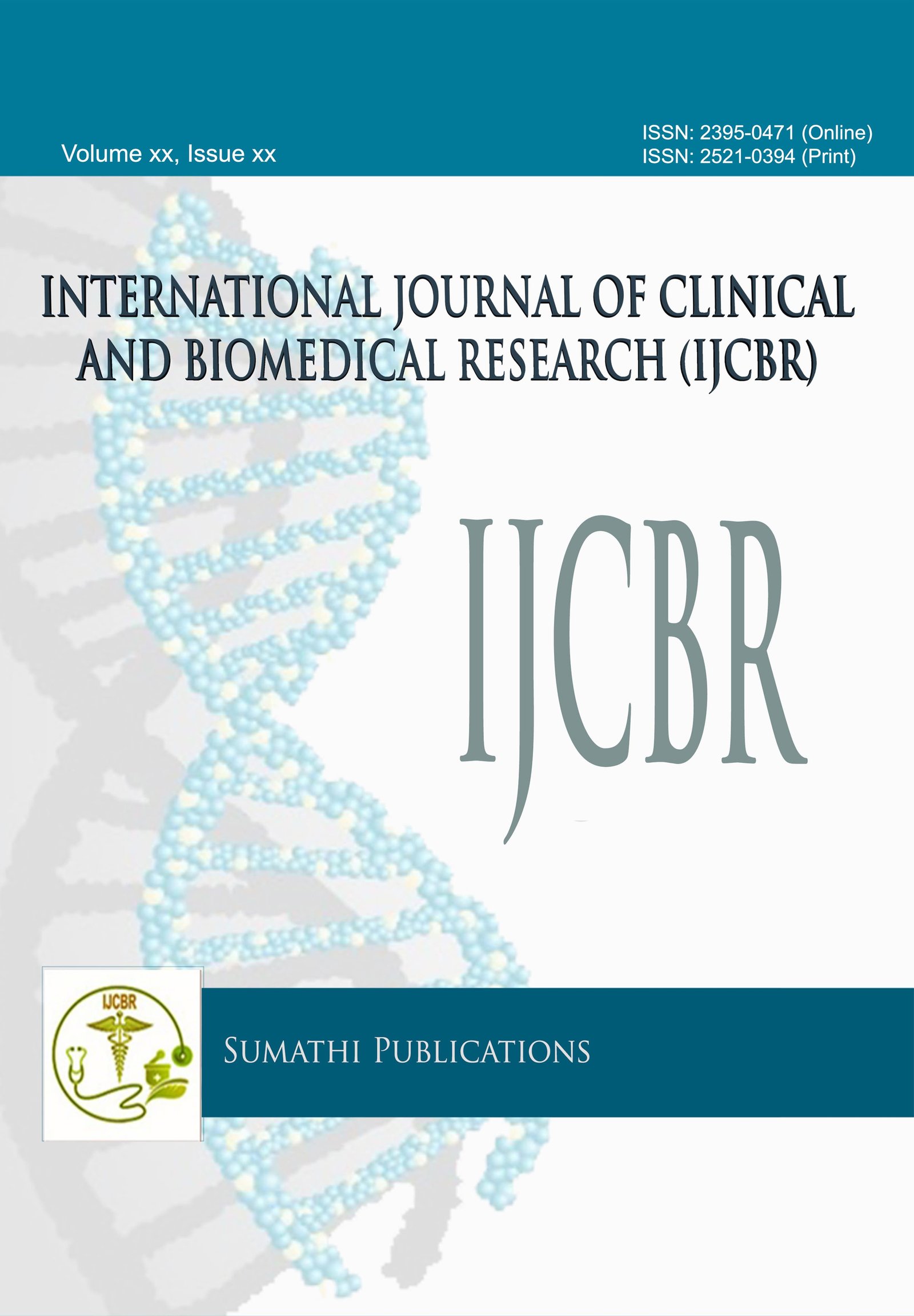Clinico-Microbiological Profile of Infective Keratitis in a Tertiary Care Hospital, Eastern India
DOI:
https://doi.org/10.31878/ijcbr.2019.54.04Abstract
Background: Infective Keratitis (Microbial Keratitis) is an infection of the cornea caused by a wide spectrum of microbial agents. Its main clinical presentation is a Corneal ulcer that is defined as a Loss of corneal epithelium with infiltration and suppuration of the underlying stroma. According to the World health organization (WHO), corneal diseases are among the major causes of vision loss and blindness in the world today, second only to cataract in overall importance. Aim: To isolate and identify the pathogenic organism Method: The study was conducted in 45 patients diagnosed with corneal ulcer attending Ophthalmology OPD, MKCG Medical College and Hospital, Berhampur over a period of 2 months. The material was scraped from the leading edge and base of the ulcer and was inoculated onto Blood agar, Mac Conkey agar and Sabouraud Dextrose agar for culture and onto 2 slides for Gram’s stain and 10% KOH wet mount. The antibiotic susceptibility testing was done by Kirby Bauer’s disc diffusion method. Results: Out of a total of 45 patients, 35were males. The majority of the patients belonged to the age group of 50-60 years. Pain, Redness, Hypopyon was most commonly seen in Bacterial keratitis. In Fungal Keratitis, Redness (80%), Blurred vision (80%) was seen. The most common occupation was Farmers (66.6%). Trauma was the most common risk factor (23 isolates). The majority were bacterial isolates (29 isolates, 64.4%) followed by fungal (5 isolates, 11.1%). The predominant isolate was Staphylococcus aureus (68.9%). Staphylococcus aureus showed 70% sensitivity to Moxifloxacin and 65% sensitivity to Gentamycin. Conclusion: Knowledge of the local prevalence of etiological agents of IK and their susceptibility patterns helps in guiding ophthalmologists to select appropriate antibiotic for empirical therapy.
Downloads
Downloads
Published
Issue
Section
License
The journal allows the author(s) to hold the copyright without restrictions and will retain publishing rights without restrictions.
The submitted papers are assumed to contain no proprietary material unprotected by patent or patent application; responsibility for technical content and for protection of proprietary material rests solely with the author(s) and their organizations and is not the responsibility of the journal. The main (first/corresponding) author is responsible for ensuring that the article has been seen and approved by all the other authors. It is the responsibility of the author to obtain all necessary copyright release permissions for the use of any copyrighted materials in the manuscript prior to the submission.
What are my rights as an author?
It is important to check the policy for the journal to which you are submitting or publishing to establish your rights as
Author. Journal's standard policies allow the following re-use rights:
- The journal allows the author(s) to hold the copyright without restrictions.
- The journal allows the author(s) to obtain publishing rights without restrictions.
- You may do whatever you wish with the version of the article you submitted to the journal.
- Once the article has been accepted for publication, you may post the accepted version of the article on your own personal website, your department's website or the repository of your institution without any restrictions.
- You may not post the accepted version of the article in any repository other than those listed above (i.e. you may not deposit in the repository of another institution or a subject-matter repository) until 12 months after publication of the article in the journal.
- You may use the published article for your own teaching needs or to supply on an individual basis to research colleagues, provided that such supply is not for commercial purposes.









